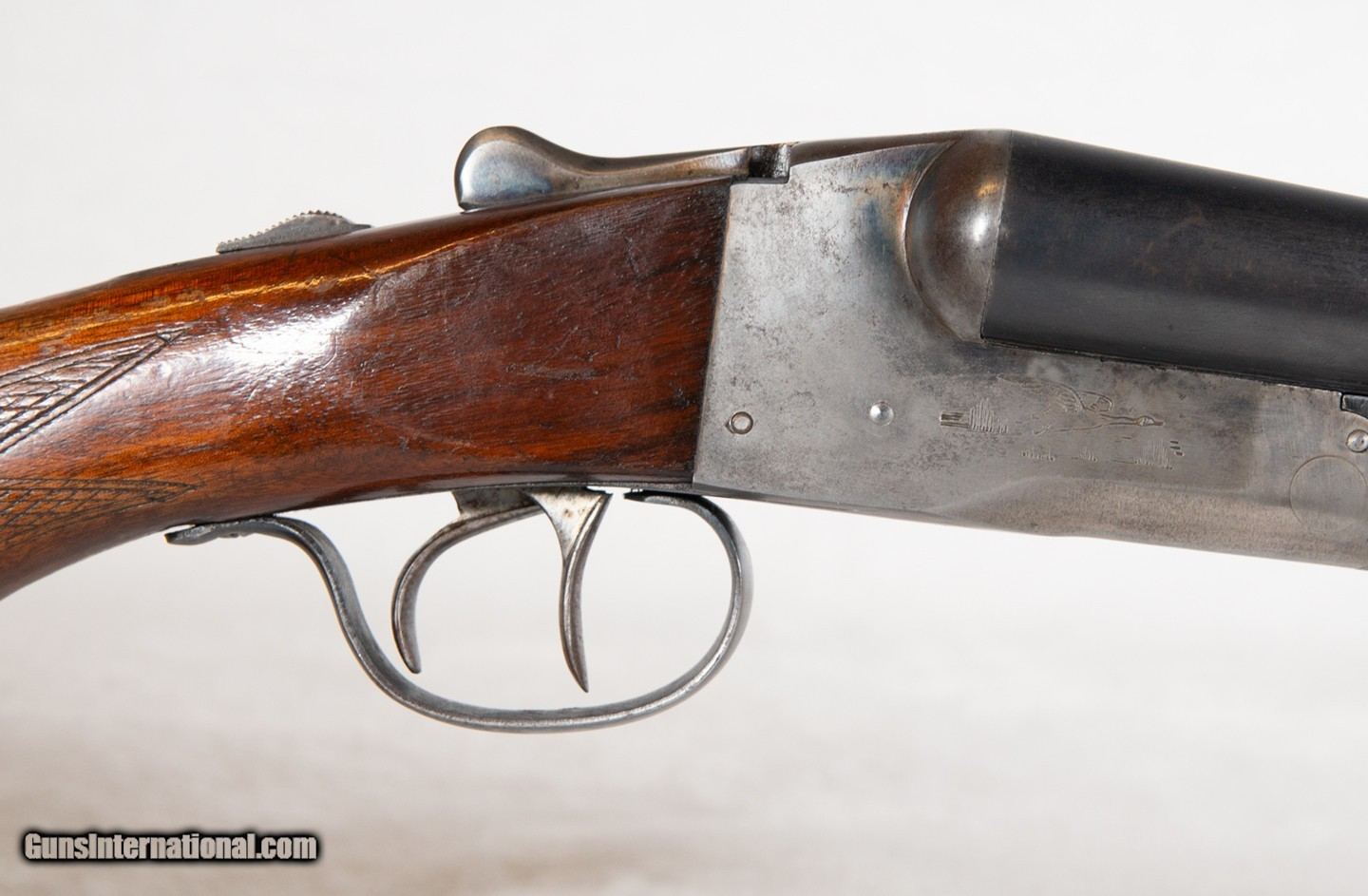
- #Lefever nitro special 12 gauge serial number serial number
- #Lefever nitro special 12 gauge serial number full
The wear and tear of years and usage also require repair: hammer springs, firing pins, hinge pin, extractors, wood finish, butt plate, checkering, engraving, barrel bluing, and receiver case-hardening – any or all of these may need attention.Īll the repair and modernization work on this Lefever 16 was relatively simple. Other features that may trouble shooters include small trigger guards, pistol grips so close to the triggers that they cramp large hands, thick combs, short stocks, non-rebounding firing pins, steep forcing cones at the forward end of the chambers, and slightly over-size chambers. They also have tight choke constrictions, necessary to shoot good patterns with the ammunition of that time. Most have excessive drop at the stock’s comb and heel, because shooting style and form was much different in that era. To those who gasp and protest that modernization diminishes an old double gun’s value, I remind that the gun’s value was $550.ĭouble guns produced in the late nineteenth and early twentieth centuries have a number of characteristics and dimensions that differ from shotguns of today. Suffice to say, my goal was more modernization than restoration. I will not launch into a lengthy discussion, at least not here and now, of the relative philosophies and merits of restoration vs. That was good, because the 16 gauge guns manufactured that year all had 2 ¾-inch chambers, the standard length for today’s 16 gauge shotshells, so I would not have to buy or load ammunition of 2 9/16 or 2 ½-inch case length.
#Lefever nitro special 12 gauge serial number serial number
Matching the gun’s serial number to the production dates for Ithaca-manufactured shotguns posted on the Internet, I learned it was made in 1928. Returning home to the North Country, I disassembled the Nitro Special and confirmed that it was mechanically sound. The Ithaca-manufactured Lefever Nitro Special is a good, solid gun, but it is not in any sense a first-quality double gun. Fox doubles that make aficionados of American classic guns swoon.īut the Nitro Special is a Lefever in name only, the brand name having been purchased by the Ithaca firearms company sometime after Dan Lefever died in 1906 and his namesake gun firm went belly up in 1919. “Dan” Lefever in the late nineteenth century – are truly fine guns, as good as or better than the Parker and L.C. Lefever double guns – the true Lefever guns designed and manufactured by D.M.

Similar, I suppose, to the universal Remington 870 pump action shotgun of today. Not an unreasonable price for tying the knot in Reno.īack in the 1920s and 30s, the Nitro Special was one of a half dozen plain-Jane doubles that could best be described as a working man’s gun. She was a Lefever Nitro Special, a side-by-side double gun in 16 gauge. Its first four digits were the same as the final four digits of my Social Security number. I reassembled her, and as I was snapping the forend back into place I glanced at the serial number. I was smitten but was not ready to take her on as a reclamation project. They chimed musically nothing dull or flat about this lady’s tune. I removed the forend, unlatched the barrels, held them up by the barrel hook, and tapped each with a fingernail.
#Lefever nitro special 12 gauge serial number full
Although the barrels were marked modified and full choke, I suspected they were tighter – probably full and extra-full. Her butt plate was chipped and her checkering was worn smooth. Her wood was solid and nicely grained, although the finish was gone and she had several scrapes, scratches, and nicks. She locked up tight with her action release lever still right of center, and her triggers both let off sharply and crisply with no bump or grind. A once shapely thing, now down on her luck and her looks.īut she opened easily without squeak or rattle or sway, and a look down her bores showed she has no pitting or scoring inside, where it counted.

She had gone all gray and silver, and she was bruised and scarred here and there and most everywhere. When we first met and I picked her up in Reno, I could see that she had had some hard use.

She’s plain Judy O’Grady, not the colonel’s fine lady. Take you a workingman’s lass and polish her bright as brass ĭress her in such finery as she never hoped to see.īut in truth, oh how it hurts, you’ll find ’neath silken skirts,


 0 kommentar(er)
0 kommentar(er)
